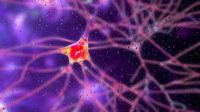For decades, families affected by Huntington’s disease have waited for a breakthrough that could slow the relentless march of this inherited brain disorder. Now, for the first time, scientists report a gene therapy that appears to do just that, offering a glimmer of hope to the Huntington’s community and the wider world of neurodegenerative disease research.
On September 24, 2025, University College London (UCL) and the biotechnology company uniQure jointly announced the results of a Phase I/II clinical trial of AMT-130, a one-time gene therapy designed to address the root cause of Huntington’s disease. According to the press releases and detailed coverage by HDBuzz, the therapy demonstrated a remarkable 75% reduction in disease progression over three years in patients who received a high dose, compared to standard care and external control groups.
Huntington’s disease, a rare but devastating condition, affects approximately 100,000 Americans and many more worldwide. The disease is caused by a faulty version of the huntingtin gene, which leads to the production of a toxic protein that damages brain cells. Children of affected parents face a 50% risk of inheriting the faulty gene. Symptoms typically emerge in mid-adulthood and steadily worsen over 15 to 20 years, robbing individuals of movement control, cognitive abilities, and emotional stability.
AMT-130 is a novel therapy that uses a harmless viral vector—specifically, an adeno-associated virus known as AAV5—to deliver genetic instructions directly into the brain. These instructions act like a set of blueprints, producing a molecule that binds to and destroys the messenger RNA used to create the huntingtin protein. As a result, the production of both the toxic and normal forms of the protein is reduced. Unlike current treatments that merely manage symptoms, AMT-130 is designed to be a one-time intervention with effects that could last a lifetime.
The trial enrolled fewer than 30 participants, with 12 receiving the high-dose therapy. The delivery method, a complex brain surgery, might sound daunting, but according to researchers, patients tolerated the procedure well, with manageable side effects that resolved over time. "This result changes everything," said Professor Ed Wild of UCL in the official statement. "One of my patients who had to retire due to the disease has even been able to return to work." His sentiment was echoed by Professor Sarah Tabrizi, lead scientific advisor for the trial, who noted, "These data indicate that AMT-130 has the potential to meaningfully slow disease progression – offering long-awaited hope to individuals and families impacted by this devastating disease."
To gauge the therapy’s effectiveness, scientists relied on several well-established measures. Chief among them was the Composite Unified Huntington’s Disease Rating Scale (cUHDRS), which assesses movement, cognition, daily function, and independence. Patients in the high-dose group declined much more slowly than their counterparts in the natural history control group, with a 75% reduction in progression—a truly striking figure. The trial also measured Total Functional Capacity (TFC), reflecting the ability to manage daily life, which declined 60% more slowly in the treated group. Cognitive processing, assessed via the Symbol Digit Modality Test, showed an 88% slowing of decline, while attention and language skills, measured by the Stroop Word Reading Test, slowed by 113%. Even motor symptoms, as tracked by the Total Motor Score, worsened 59% more slowly, though this result did not reach statistical significance.
Importantly, these improvements weren’t limited to clinical tests. Researchers also tracked levels of neurofilament light (NfL), a protein released when brain cells are under stress or damaged. At 36 months after treatment, high-dose participants had an 8% reduction in NfL, suggesting less ongoing brain damage. This biomarker result aligns with the observed slowing of symptoms, reinforcing confidence in the therapy’s biological effect.
Still, scientists and advocates urge caution. The trial’s small size and reliance on external historical controls, rather than a classic placebo group, mean the findings, while exciting, are not yet definitive. As HDBuzz pointed out, “All of the statistics reported in this update relate to data from less than 30 participants, only a portion of whom received the high dose of the drug that seems to show benefit.” There are also unanswered questions about the optimal level of huntingtin lowering, which brain regions should be targeted, and how the therapy might work in people at different disease stages. Further, while side effects have been manageable so far, the long-term safety of gene therapy delivered directly to the brain remains under close scrutiny.
The logistical challenges ahead are not trivial. Delivering a one-time gene therapy via brain surgery requires specialized neurosurgical teams, extensive planning, and likely a significant investment in manufacturing capacity. The cost, as with other gene therapies, is expected to be high, raising questions about future access and equity. Nonetheless, uniQure has already begun scaling up its manufacturing and is recruiting more participants, including those previously excluded due to brain structure, to expand the evidence base.
Regulatory hurdles remain as well. The earliest possible application for FDA approval is expected in 2026, with a similar timeline for European regulators. The findings have yet to be published in a peer-reviewed medical journal but are slated for presentation at a major medical conference in October 2025, where they will be scrutinized by the wider scientific community.
Despite these caveats, the Huntington’s community is celebrating a historic moment. As Professor Ed Wild observed, “Today we get to move Huntington’s disease into the column headed ‘treatable’. We are here because of the astonishing bravery of the volunteers in this gene therapy trial – and everyone who ever signed up for a trial that disappointed but got us a little closer – and everyone who ever donated spinal fluid, or blood, or had an MRI scan for HD research, or took part in Enroll-HD or drove a loved one to a clinic visit or baked a batch of muffins for HD. You did this. We have written a new future together – now we must make it a reality for everyone who needs it.”
The ripple effects of this success extend beyond AMT-130. The results bolster the case for huntingtin-lowering as a therapeutic strategy, encouraging other companies and researchers working on similar drugs—whether delivered by pill, injection, or spinal tap. Each approach has its own risks and benefits, and only time will tell which proves most effective and practical for the widest range of patients.
For now, the news of AMT-130’s success offers more than just hope—it marks a pivotal shift in the landscape of Huntington’s disease. After years of setbacks and incremental progress, the field finally has evidence that the course of this devastating disease can be altered. The journey toward widespread access and long-term safety is far from over, but a new era for Huntington’s disease has begun, thanks to the courage of patients, the dedication of scientists, and the resilience of a community that refused to give up.


